What are the challenges for reopening schools in Ethiopia? Perspectives of school principals and teachers
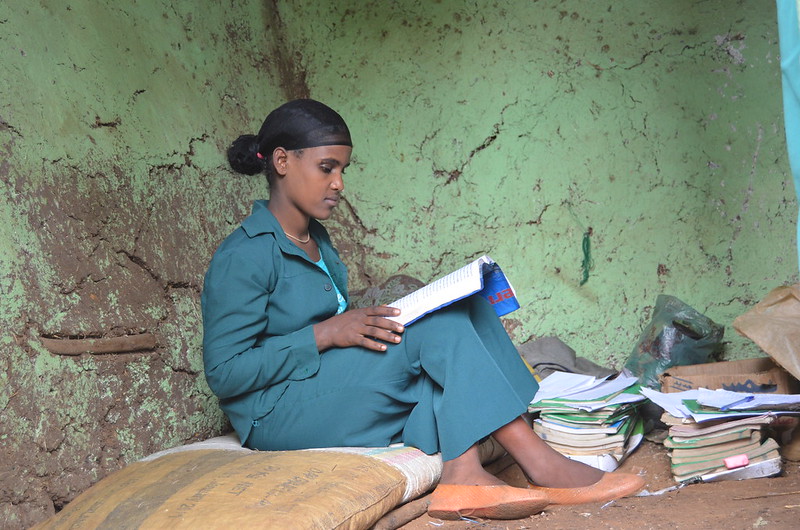
This blog highlights some of the key messages from a recent phone survey carried out with school principals and teachers in Ethiopia. The researchers involved are Louise Yorke, Research Associate, and Pauline Rose, Director, at the REAL Centre, University of Cambridge; Tassew Woldehanna, President at Addis Ababa University; and Belay Hagos Hailu, Director at the Institute of Educational Research at Addis Ababa University. Funding for these phone surveys was provided by Cambridge-Africa ALBORADA Research Fund COVID-19 Emergency Award, and was undertaken as part of the Research for Improving Systems of Education (RISE) Ethiopia programme.
* Photo Sources: Photo 1 (above) shows Amarech from Ethiopia, a grade nine student that travels for 2 hours and 30 minutes to school. Photo © Flickr. Photo 2 (homepage and below) shows an empty classroom in Haro Huba school, in Oromia region, central Ethiopia. © UNICEF Ethiopia/2016/Ayene on Flickr.
As schools in Ethiopia prepare to reopen following the COVID-19 pandemic, they urgently need to understand the impact that school closures have had on the education system in order to identify appropriate measures for reopening schools safely. Too often, the perspectives of school principals and teachers are missing from this planning, yet they are best placed to provide information on the challenges faced.
To address this gap, we carried out phone surveys with 127 school principals and 316 teachers across 7 diverse regional states and 1 city administration (Amhara, Benishangul Gumuz, Oromiya, SNNP, Somali and Tigray and Addis Ababa), in both rural and urban locations. These interviews were linked with research we had previously undertaken in these schools as part of our Research for Improving Systems of Education (RISE) Ethiopia programme. We aimed to identify how school principals and teachers have been responding to the crisis; if and how they have been able to support parents and students during school closures; and their priorities once schools reopen.
In this blog article, we summarise some of our key findings from the phone surveys – we aim for these to be useful in particular for the Government of Ethiopia and aid donors in the country for planning the complex school reopening process. Given that many other countries around the world are facing similar questions and challenges, the issues are likely to be of wider relevance too. A full report of the findings will be available soon.
Access to current information about COVID-19 is vital for school principals and teachers to open schools safely.
Understanding the access that school principals and teachers have to technology and information, as well as the support they have received during the school closures, is important for understanding what will be needed as schools reopen. Most school principals and teachers had access to electricity and some means of communication (phone, radio, television) during school closures, which has been important for receiving practical information about COVID-19 (e.g. handwashing, physical distancing, wearing facemasks and staying at home). However, very few teachers had access to a computer/tablet or the internet, or have the skills to use technology – this has limited their ability to support students’ learning during school closures.
There are differences across region and rural-urban location in terms of access to these resources. For example, in Benishangul Gumuz and Tigray regions, no school principals or teachers have access to the internet, while no school principals have access to the internet in Somali. A particularly striking finding was the fact that a large proportion of school principals (40%) report having no access to the radio, television or internet in Somali. This undoubtedly limits access to timely information in these locations.
Beyond school principals and teachers receiving practical information about COVID-19, they have had even more limited guidance on how to support education during the school closures. About two thirds of principals (68%) and half of teachers (49%) reported receiving some support and guidance, with those in rural areas less likely to have received this support (see Figure 1). The nature and type of support and guidance received flows in a cascade manner from the Woreda Education Office, to school principals, to teachers, with evidence that information is lost from one level to another.
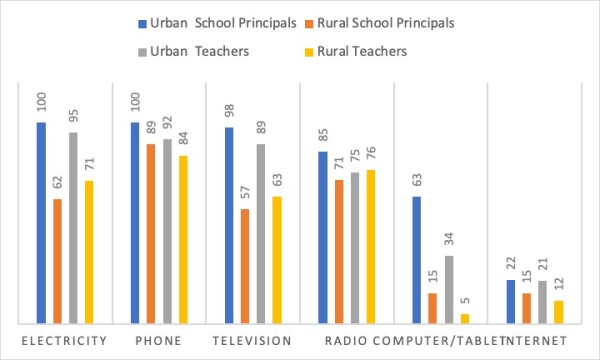
Figure 1: Access to electricity and technology of school principals and teachers across rural/urban location (%)
When reopening schools, strategies are needed to help students catch up on learning lost during school closures – this particularly includes girls, children from low-income families, and low-performing students.
During the COVID-19 school closures, efforts were made to support students by both school principals and teachers and also through government radio broadcasts, but the nature and scope of this support has been very limited. Only 57% of urban teachers and 45% of rural teachers report providing some support to students during school closures, mainly face-to-face. Teachers who received support from their school principals were more likely to have provided support to students, but in general teachers expressed that they are not very confident in their ability to provide distance learning.
Many teachers who were providing support to students during the school closures, indicate that they made efforts to make adaptations for disadvantaged groups, including girls, students from low-income families and low-performing students. However, these are also the groups suggested as least likely to benefit from distance learning.
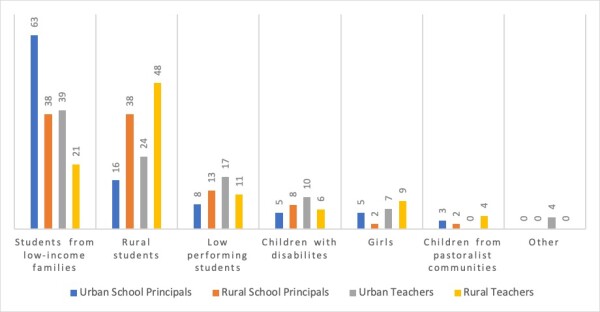
Figure 2: Students least likely to benefit from distance learning (%)
In addition, the majority of teachers believed that parents were unable to support their children’s learning, which was suggested to be due to work commitments, low literacy levels and low value for education. Furthermore, concerns were also raised about motivation for teaching and learning amongst both teachers and students.
Attention needs to be paid to additional support that students may have missed out on during school closures.
School principals and teachers also drew attention to the additional support that students may have missed out on as a result of school closures, including peer-to-peer support, physical/material support and emotional/psychological support, especially those who are disadvantaged. In some locations, particularly Addis Ababa, teachers emphasised the need to provide mental health support for students as they return to school (see Figure 3).
Despite the importance of school feeding for students for low-income families, only 27% of schools who reported having a school feeding programme prior to the school closures said that this was continuing during the school closures.
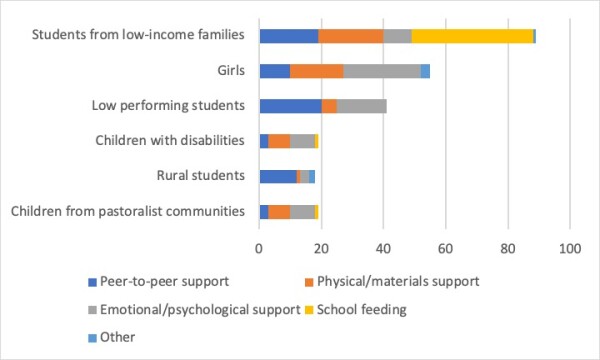
Figure 3: Forms of support students are likely to miss out on during school closure (%)
Strategies are needed to encourage all students to return to school, with extra support provided for the most disadvantaged.
One of the biggest challenges that school principals and teachers expect to face when schools reopen is ensuring that all students return to school. Most principals and teachers believe that student dropout is likely to increase. In particular, those who are at more risk are students from low-income families, girls, rural students and low-performing students. However, only 60% of school principals and 41% of teachers indicated that their schools were making preparations to support those who are likely to drop out on returning to school.
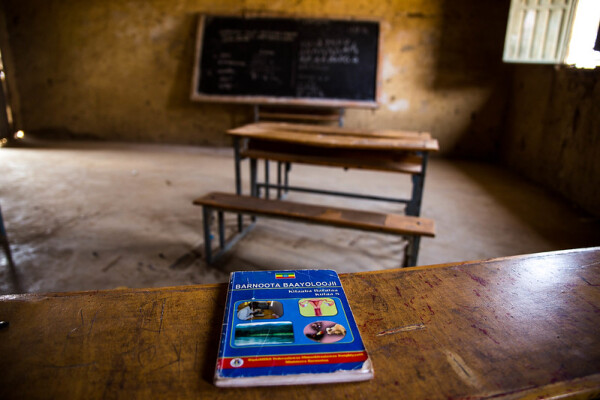
Principals and teachers called for whole-community responses for ensuring that all students return to school. This would need to involve local authorities and school management committees in raising awareness amongst the community in relation to the importance of students returning to school.
School principals have mixed opinions about the Government’s intention to automatically promote students to the next grade. Many understand that it is necessary in the context of COVID-19 and may have a positive impact for the morale of better-performing students. However, many have concerns about how it may disadvantage lower-performing students and have a negative impact on their overall learning. This in turn may lead them to drop out after schools reopen. As such, school principals emphasised the importance of the planned additional tutorial classes in helping to cover content that has been lost.
Practical infrastructure support is needed to stop the spread of COVID-19 when schools reopen.
Ensuring hygiene and safety when schools reopen was one of the greatest concerns for both school principals and teachers (see Figure 4). They indicated that their schools did not have the necessary handwashing facilities, especially in rural areas. Implementing social distancing was also highlighted as an expected challenge, due to the fact that many schools had inadequate numbers of classrooms. Given the limited resources and infrastructure, the best ways suggested to implement social distancing would be to rearrange classroom layout, build additional classrooms and implement a half-day shift cycle. The majority of school principals (68%) and teachers (59%) also agreed that it would be practical for students and staff to wear face masks in schools. Provision of face masks and hand sanitiser to students from low-income families free of charge may be necessary.
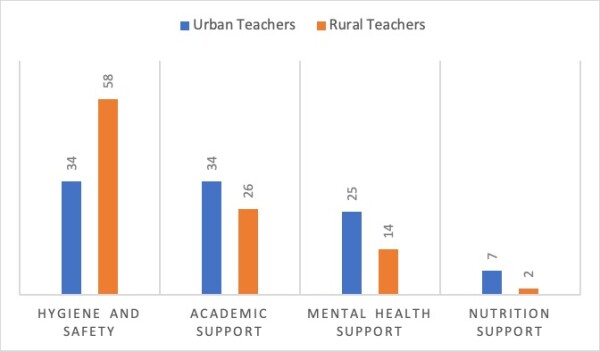
Figure 4: Teachers’ suggested strategies for supporting students when they return to school (%)
What are the key challenges for school reopening?
As this blog summarises, there is a lot to consider before and during reopening schools. Given limited resources and time, each school will have to make difficult decisions about how they can best support school principals, teachers, parents and students. Some the main challenges highlighted from our interviews with school principals and teachers include:
- School principals and teachers need to have timely information and guidance about COVID-19 and how to provide support to their students – this needs to be through communication methods that they have access to.
- Strategies are needed to help students catch up on learning lost during school closures – these need to particularly consider girls, children from low-income families, and low-performing students.
- Strategies are needed to encourage all students to return to school – with extra support provided to the most disadvantaged. And support needs to be in place to encourage students to stay in school once they return.
- Attention needs to be paid to additional support that students may have missed out on during school closures – this includes peer-to-peer support, physical/material support and emotional/psychological support.
- Schools need practical infrastructure support to help prevent the spread of COVID-19 when schools reopen – this includes handwashing facilities, support with how to socially distance, and the availability of face masks.
*This project is supported by a Cambridge-Africa ALBORADA Research Fund COVID-19 Emergency Award. For more project updates and blogs please see our Cambridge-Africa Updates page.

